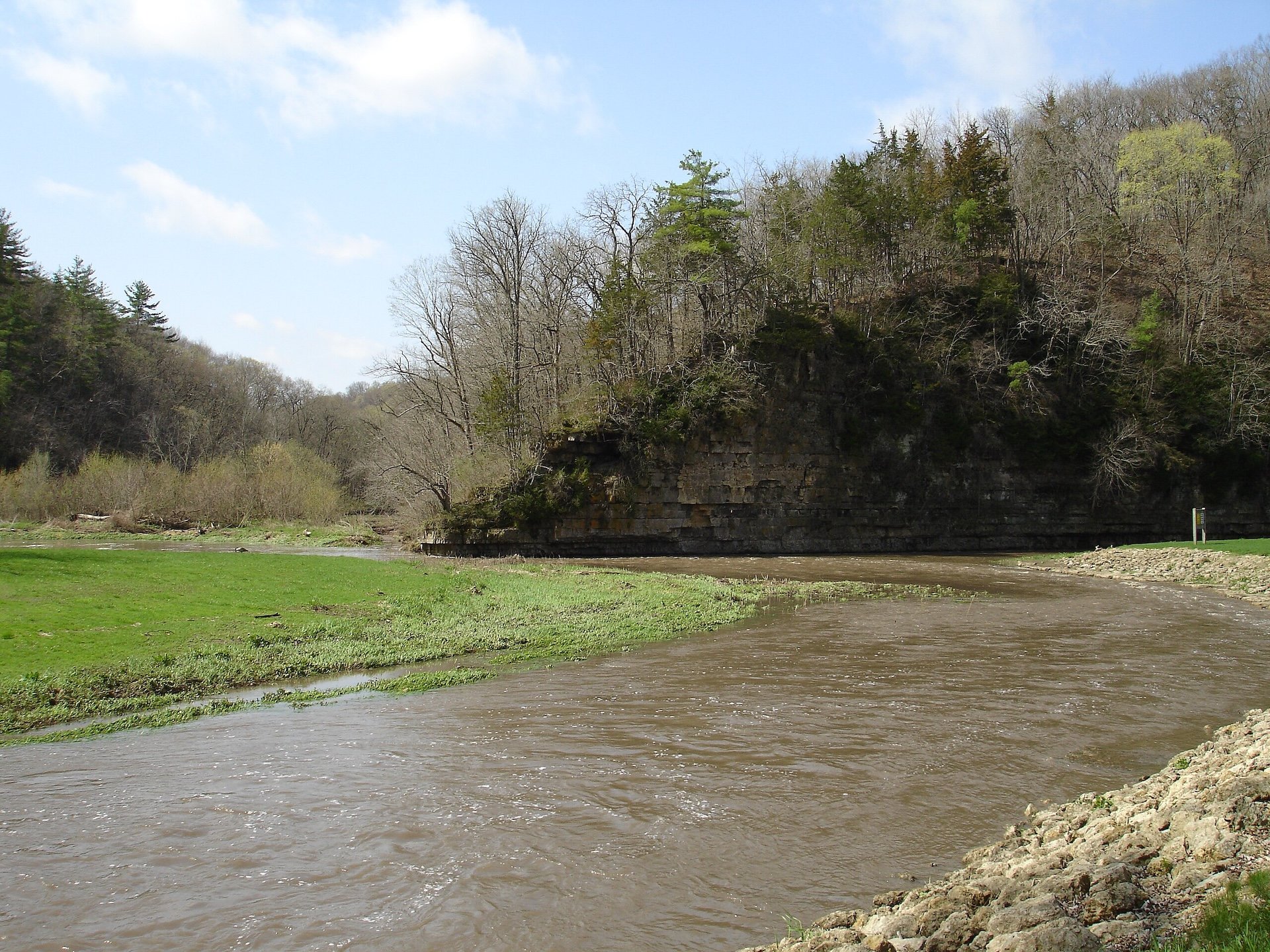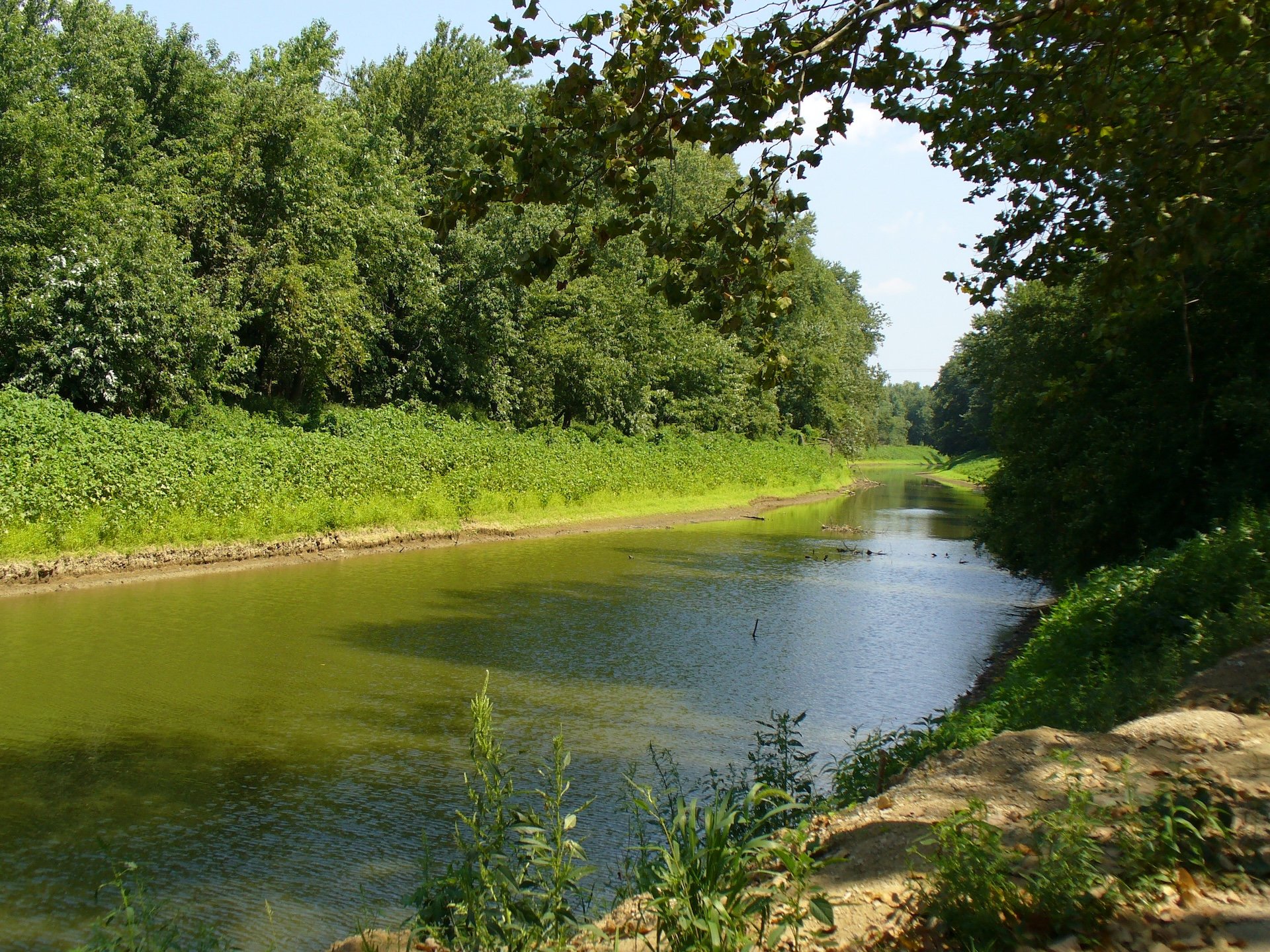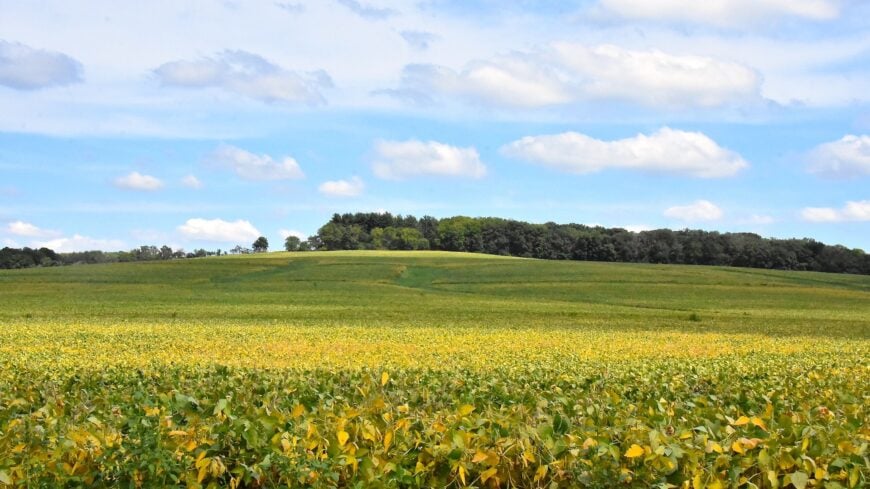
The Driftless Area of northern Illinois does something most landscapes in the Midwest forgot how to do: ripple. It’s a rare pocket the glaciers missed, which means no flat sprawl, no endless grid. Just winding valleys, steep bluffs, trout creeks, and towns that seem to rise naturally out of the limestone.
In this overlooked corner of the state—where towns like Mount Carroll and Apple River hunker in folds of wooded hillside—seclusion isn’t a gimmick, it’s a fact of geography. And for those looking to step outside the roar of the interstate and into the quiet hum of old barns, old stories, and new scenery, these 10 towns offer the kind of retreat that feels earned, not engineered.
Each location mentioned here exists within a landscape that asks you to look twice. Nora may flicker past like a footnote, but it’s a whole chapter in small-town resilience. Savanna, laid up against the Mississippi, has a kind of maritime gravity: barges and bluffs, train whistles and dusk.
There’s no tidy narrative here—just towns still shaped by geology and stubbornness. Barn roofs bow into their age. Churches sit square on stone. The people stay because the light moves differently through these hills. The wind has stories. The soil is personal.
These are 25 towns where topography still calls the shots—and where beauty’s never been paved over.
25. Cedarville’s Ridge‑Line Silence

Cedarville is quietly nestled among the limestone ridges and wooded valleys of northern Illinois, where winding rural roads seem to lead away from time itself. With no major highways nearby and fewer than 800 residents, the town sits tucked beneath a canopy of trees, sheltered by the land and its own quiet pace.
There’s a calm here that feels deeply rooted—old stone walls, shaded cemeteries, and narrow lanes that echo with history. Visitors explore the Cedarville Cemetery, final resting place of Jane Addams, walk the trails that edge local creeks, or pause at the few remaining buildings that once formed the heart of a 19th-century village.
Seasonal craft fairs and nearby forest preserves offer just enough activity to keep it gently alive. Most locals work in surrounding towns or tend to the land, content with the rhythm that Cedarville holds. It’s the kind of place that reminds you how still and storied a quiet town can be.
Where is Cedarville?
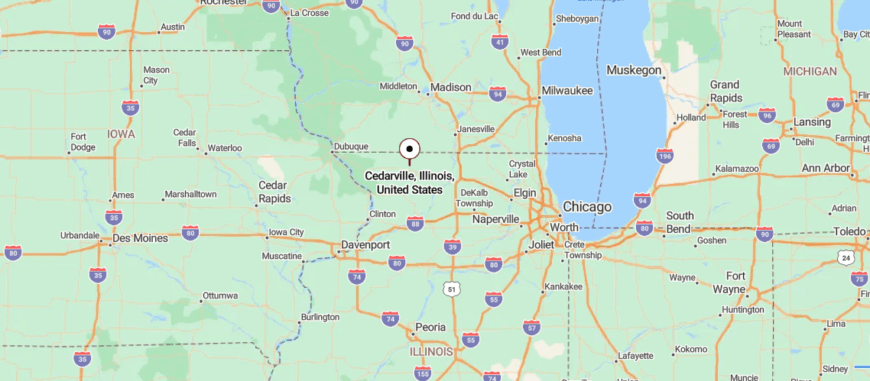
Cedarville is located in Stephenson County, nestled in the softly rolling hills of northwestern Illinois where farmland meets forest just shy of the Wisconsin border. Positioned about 5 miles north of Freeport and nearly 110 miles west of Chicago, the village rests quietly beyond the reach of major highways, surrounded by prairie grasses, old oaks, and open sky.
The journey in takes you along Illinois Route 73 before easing onto narrower county roads that meander past silos, stone fences, and creeks hidden beneath low wooden bridges. It’s close enough to find without effort, but far enough that even the breeze seems to slow, carrying the hush of a place untouched by hurry.
24. Leaf River’s Gentle Loop
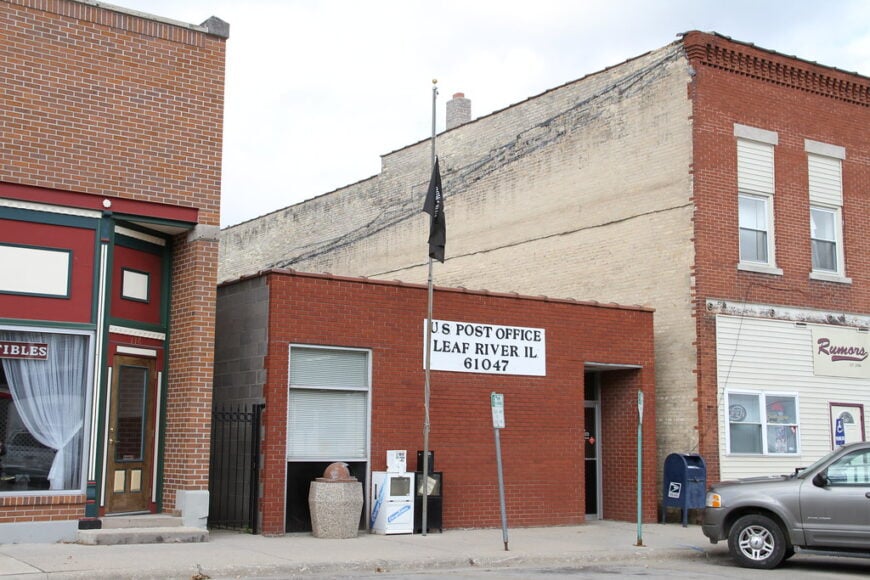
Leaf River sits quietly along the banks of its namesake stream, tucked between fields and forest in northern Illinois where the roads narrow and the noise fades. With fewer than 500 residents and no major highways nearby, the town feels like it belongs to another pace entirely—removed, unbothered, and held gently by the landscape.
Its charm lies in the quiet: farmhouses set back from the road, a simple main street, and open skies that stretch for miles. You can fish or paddle the slow-moving river, hike through nearby woods, or join in during the annual fall festival that fills the air with the scent of apples and woodsmoke.
A small post office, a handful of shops, and generations of farm families keep the town grounded. Agriculture still shapes daily life, as it has for over a century. It’s the kind of place that reminds you how peaceful tucked-away can feel.
Where is Leaf River?
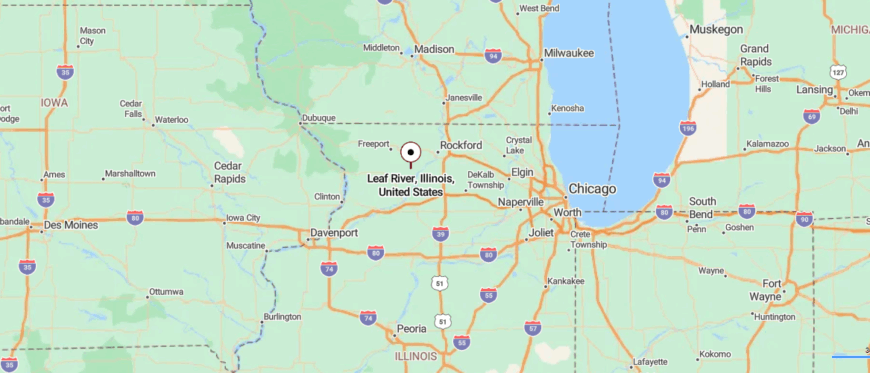
Leaf River is located in Ogle County, nestled in the northern tier of Illinois amid gently rolling farmland near the Wisconsin border, where the eponymous stream winds quietly through woods and meadows. The village lies about 20–25 miles north of Rochelle and roughly 70 miles west of Rockford, tucked off Illinois Route 72 amid open fields and low ridges.
You enter via peaceful two‑lane state highways through undulating pastureland, then turn onto narrow county roads shaded by oaks and grassy ditches before arriving in town. It’s close enough to find without effort, but far enough that time seems to pause by the river’s peaceful murmur.
23. Mount Morris’s Timbered Stillness

Mount Morris rests quietly among the gently rising hills and scattered woodlands of northern Illinois, just far enough from major highways to feel like its own world. With tree-lined streets, a small-town square, and echoes of its historic past, the town carries a calm, almost storybook rhythm.
Once home to a printing college, it still hums with quiet creativity—murals on brick walls, summer concerts under the stars, and local art shows in the old library hall. Visitors stroll through campus ruins, picnic at the wooded park, attend the Fireworks Festival, or browse the farmer’s market on weekends.
Most residents work in nearby towns or farm the surrounding land, holding onto the steady, grounded pace that defines the area. Mount Morris isn’t remote by miles, but by mood—quiet, nostalgic, and inward-turning. It’s the kind of place that reminds you how rich simplicity can feel.
Where is Mount Morris?
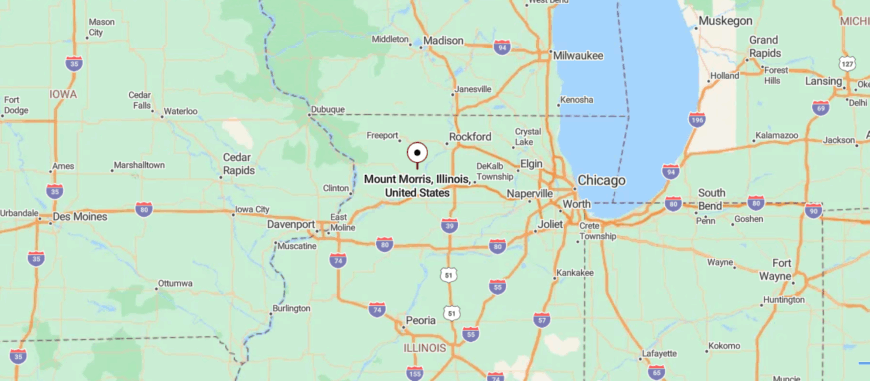
Mount Morris sits in Ogle County in northern Illinois, nestled where the gentle uplands of the Driftless Area begin to roll into the wider plains. The village straddles the crossroads of Illinois Route 64 and Illinois Route 251, making it both accessible and quietly tucked away from major interstates. It lies about 15 miles southeast of Freeport and roughly 30 miles west of Rockford, placing it within reach of larger towns yet buffered by open fields. Mount Morris rests beneath limestone bluffs and wooded knolls that give the prairie a soft, undulating character.
To reach Mount Morris, visitors typically exit I-39 at the Illinois Route 64 interchange and head west through farmland dotted with silos and stone fences. After crossing the South Branch of the Kishwaukee River, the roadway narrows past oak-lined ditches into the heart of town. From the north, Illinois Route 251 brings travelers down through rolling pastures before intersecting the village’s historic main street. The journey unfolds gradually, with each bend revealing the hills and hollows that shape this quietly resilient community.
22. German Valley’s Soft Horizon
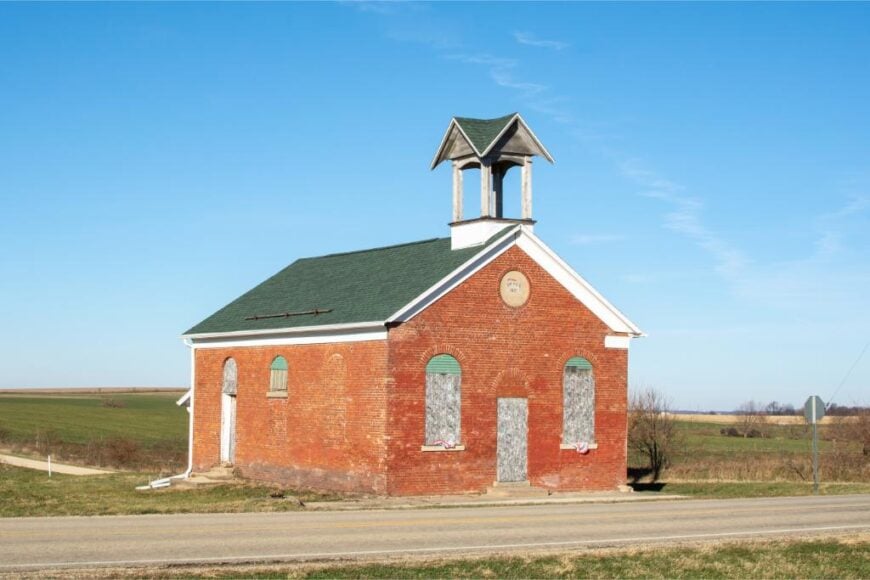
German Valley is nestled deep in the farmland of northern Illinois, where long stretches of county roads and endless fields make it easy to feel far from everything. With a population just under 500 and no major highways nearby, the town moves at its own quiet pace—sheltered by silos, barns, and the hush of open sky.
The vibe is simple and rural, with tidy homes, well-worn tractors, and a grain elevator that anchors the skyline like a watchful landmark. You can stroll the town’s quiet streets, fish or paddle in nearby Silver Creek, visit the old general store building, or take a country drive past wildflowers and windmills.
A small Lutheran school and generations of family-run farms keep the town rooted in tradition and rhythm. Life here isn’t loud or hurried—it stretches out with the land itself. It’s the kind of place that reminds you how comfort can grow in quiet places.
Where is German Valley?
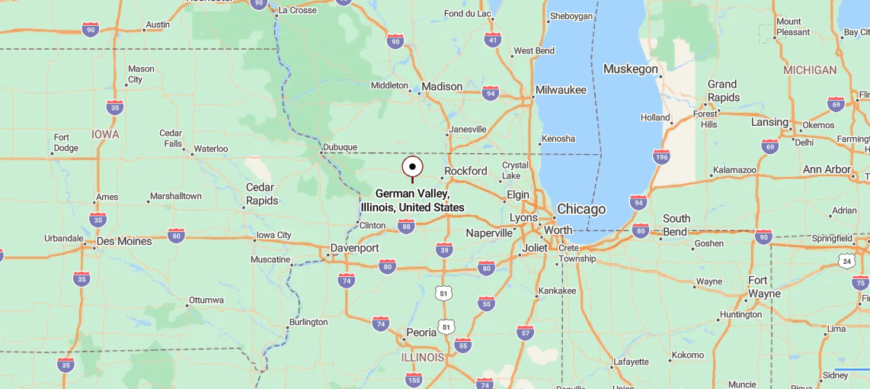
German Valley is located in southeastern Carroll County, tucked into the gently rolling uplands of northwestern Illinois just a few miles from the Illinois‑Wisconsin border. It sits about 8 miles south of Stockton and roughly 30 miles southeast of Galena, quietly set off Illinois Route 72 on the edge of rural farmland.
You reach the village via two‑lane state roads that curve through gentle pastures and wooded hollows before narrowing into tree‑lined country lanes leading into town. It’s close enough to visit for an afternoon drive, but far enough that the mound‑like hills and open fields invite a slower rhythm once you arrive.
21. Pearl City’s Western Quiet
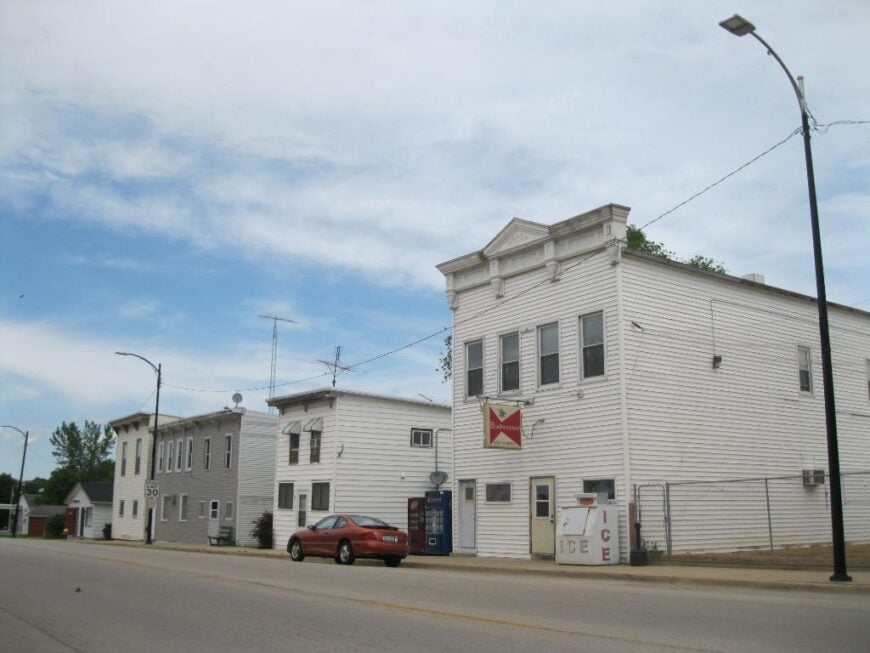
Pearl City is a small village tucked among the low hills and wide fields of northwest Illinois, where the long stretches of farmland and narrow backroads create a quiet world of their own. With just over 800 residents and no major highways cutting through, the town feels softly hidden—surrounded by cornfields, stitched together by gravel lanes, and untouched by rush.
The air carries the scent of cut grass and grain, and the days move with the gentle rhythm of tractors and school bells. Visitors can walk the peaceful streets, fish in Yellow Creek, explore the small town park, or stop in at the local diner where everyone knows your name.
Farming remains the town’s anchor, with families working the land just as they have for generations. The pace is slow, steady, and grounded in tradition. It’s the kind of place that reminds you how easily a town can disappear into the quiet—and how beautiful that can be.
Where is Pearl City?
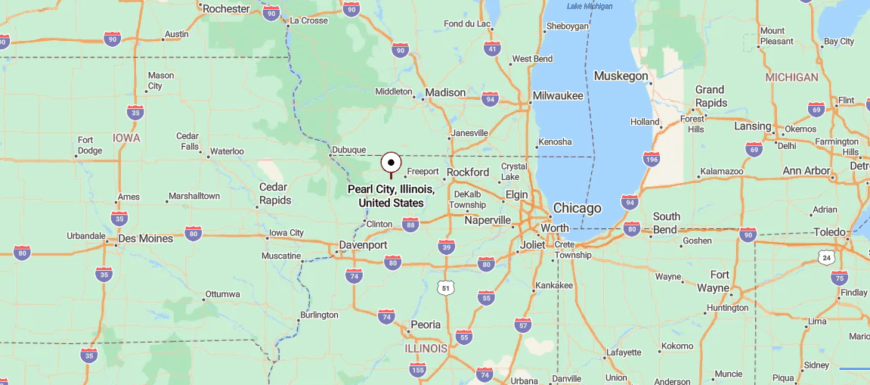
Pearl City is located in Stephenson County, nestled in the gently rolling northwestern corner of Illinois, where farmland and woodlands meet just shy of the Wisconsin line. It lies about 12 miles north of Freeport and roughly 90 miles west of Chicago, set quietly off Illinois Route 73 among broad fields and modest ridges.
You reach the village via two‑lane state highway and winding county roads that pass through silos, hedgerows, and occasional oak groves before arriving at its tidy cluster of homes and businesses. It’s close enough for an easy day trip, but far enough that the farmland seems to exhale in hushed welcome when you step into town.
20. Milledgeville’s Last Light
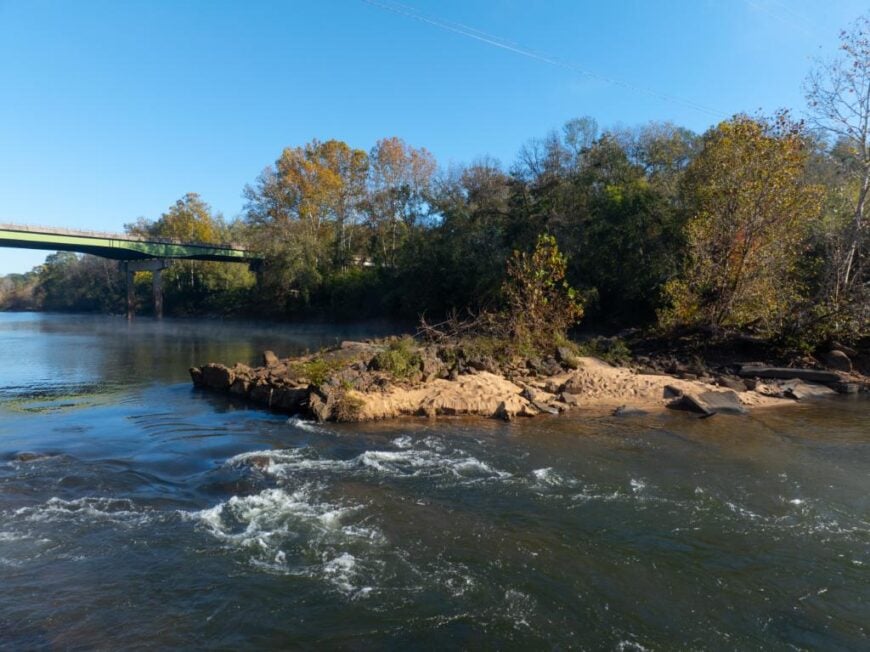
Milledgeville sits quietly in the open plains of northwestern Illinois, where long stretches of farmland and two-lane roads keep it comfortably distant from the noise of the outside world. With fewer than 1,000 residents and no major highways nearby, the town feels tucked into its own rhythm—unrushed, familiar, and deeply rooted.
The streets are lined with modest homes, an old water tower, and a few long-standing businesses that locals still rely on. Visitors can stroll through Centennial Park, fish at nearby Rock Creek, stop into the town café, or take a drive past silos and grazing cattle beneath big, open skies.
Farming remains the heart of life here, with fields stretching out in all directions and generations working the same land. The silence isn’t empty—it’s a steady kind of calm that settles in and stays. It’s the kind of place that reminds you how much peace can be found in the middle of nowhere.
Where is Milledgeville?

Milledgeville is located in Carroll County, tucked into the gently rolling uplands of northwest Illinois, not far from the Rock River and just a short stretch south of the Illinois–Wisconsin border. It’s situated about 12 miles southeast of Mount Carroll and around 25 miles east of Stockton, positioned quietly off Illinois Route 78 amid open fields and wooded ridges.
You reach the town by following the two-lane state highway through tranquil farmland before turning onto narrower county roads that drift into Milledgeville’s small, peaceful center. It’s close enough to explore on a calm afternoon, but secluded enough that the surrounding hills and open sky make the town feel like its own slow-moving world.
19. Shannon’s Hilltop Hush

Shannon is nestled in the quiet countryside of northwest Illinois, where fields roll toward the horizon and narrow roads keep it gently off the map. With no major highways and just a few hundred residents, the town feels wrapped in stillness—surrounded by farmland, wooded patches, and the occasional gravel drive leading nowhere fast.
It’s a place where time slows down, where front porches matter and the sound of a distant tractor marks the rhythm of the day. Visitors can hike in nearby Lake Carroll’s wooded trails, stop by the Shannon Café for a warm bite, explore the town park, or join the locals for seasonal events that bring the whole village together.
Farming is still the backbone here, with families rooted in the soil and the seasons. Life moves with purpose, not pressure. It’s the kind of place that reminds you how quiet and grounding a small town can be.
Where is Shannon?
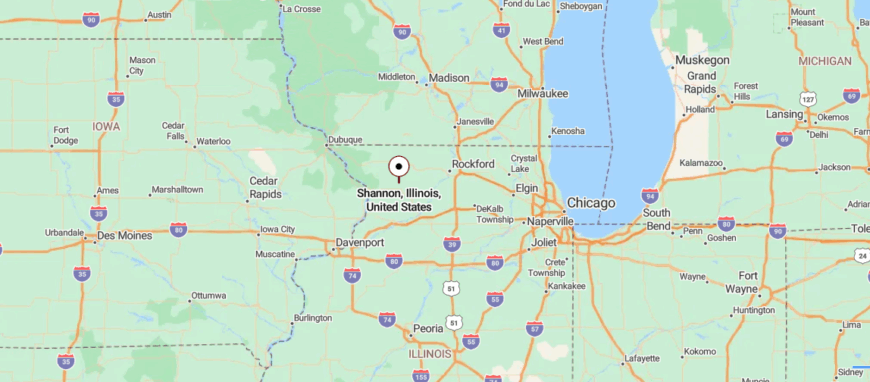
Shannon is located in Carroll County, nestled in the gently rolling uplands of northwest Illinois just a few miles south of the Wisconsin border. It lies roughly 14 miles west of Freeport and about 6 miles northeast of Lanark, set quietly off two‑lane rural roads amid farmland and occasional wooded patches.
The final leg takes you off Illinois Route 72 and onto narrower county lanes that meander through fields, hedgerows, and gentle rises before arriving at the small village. It’s close enough for an easy afternoon outing, but far enough that the surrounding land seems to hush itself around the few dozen homes and the slow flow of time.
18. Chana’s Whispered Edge
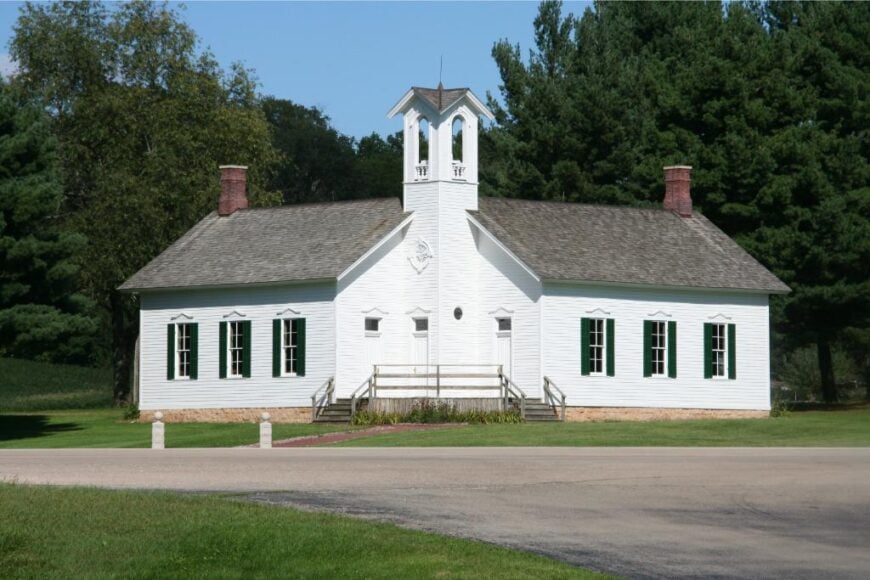
Chana is a quiet spot on the map of northern Illinois, tucked between open farmland and dense tree lines, where winding roads pass more fields than houses. With no major highways and a population barely in the triple digits, the town feels more like a whisper than a destination—easy to miss, but rich in stillness once found.
Old barns lean into the breeze, and gravel lanes stretch toward the horizon, giving the place a timeless, rural calm. You might walk the quiet backroads, explore nearby Lowden-Miller State Forest, stop by the remains of the historic train depot, or enjoy a slow afternoon watching the sky shift over golden fields.
Most locals work the surrounding land or commute to nearby towns, choosing the peace Chana offers over convenience. There’s nothing flashy here—just space, silence, and the feel of a place unchanged by urgency. It’s the kind of place that reminds you how gently a town can disappear into the landscape.
Where is Chana?

Chana is situated in Ogle County, tucked into the gently rolling farmland of northern Illinois just a few miles south of the Wisconsin border. It lies about 8 miles north of Rochelle and roughly 70 miles west of Chicago, positioned quietly off Illinois Route 39 on the edge of open fields and scattered woodlots.
You reach Chana via two‑lane state highways that run through broad, peaceful farmland before turning onto quieter rural roads that ease into its small cluster of homes and grain silos. It’s close enough for a leisurely countryside drive, but distant enough that the rhythm of the land feels slow and still once you arrive.
17. Durand’s Northern Still
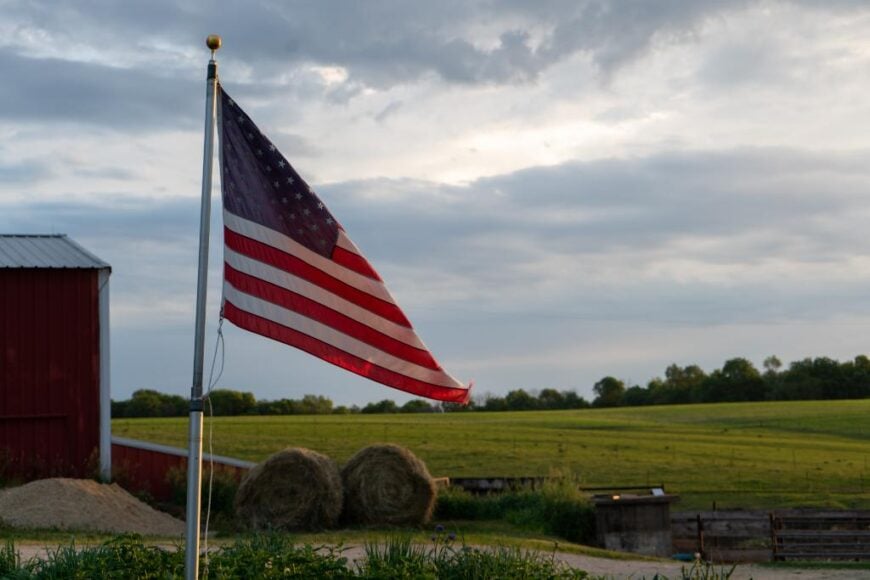
Durand rests quietly near the northern edge of Illinois, surrounded by miles of farmland, narrow roads, and a patchwork of creeks and wooded groves that keep it comfortably tucked away. With fewer than 1,500 residents and no major highways in sight, it feels far removed from the rush of modern life—where time slows and silence settles easily.
The town’s heart beats through its historic downtown, lined with brick storefronts, vintage signage, and the hum of local conversation. Visitors can stroll through Saelens Park, fish at nearby lakes, browse local antique shops, or catch live music during the town’s summer street dances.
Farming and small-town trades support daily life here, rooted in generations of steady hands and familiar rhythms. There’s a lived-in warmth to Durand, where each season rolls in gently, and neighbors stay neighbors for life. It’s the kind of place that reminds you how deeply comfort can grow in quiet corners.
Where is Durand?
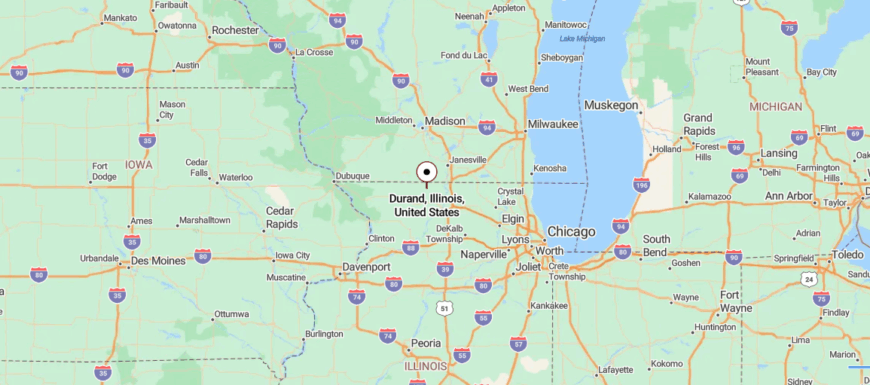
Durand is located in Winnebago County, nestled amid the gently rolling farmland of northern Illinois just a few miles south of the Wisconsin border. It sits about 15 miles north of Freeport and roughly 80 miles west of Chicago, set quietly off Illinois Route 75 where cornfields and silos stretch across the horizon.
You reach the village via a two-lane state highway before turning onto narrow country roads that wind through open fields and shaded tree lines into Durand’s modest center. It’s close enough to find on a peaceful afternoon journey, but far enough that the landscape seems to soften its edges and invite stillness as you arrive.
16. Galena’s Quiet Streets
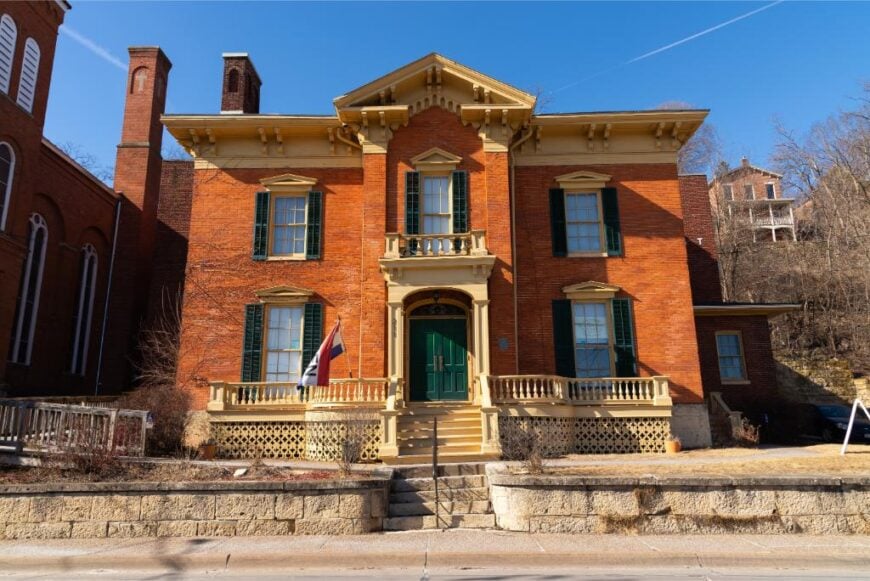
Galena nestles in the rugged hills of northwest Illinois, surrounded by bluffs, forests, and winding roads that seem to lead back in time. Though just a short drive from bigger towns, its tucked-away location and curving riverfront make it feel worlds apart—hidden beneath layers of stone, brick, and memory.
The town hums with old-world charm: cobblestone sidewalks, 19th-century storefronts, and gaslamps that glow softly as dusk falls over the valley. Visitors wander through historic homes like Ulysses S. Grant’s, hike the trails above Horseshoe Mound, shop for handmade goods on Main Street, or paddle along the Galena River.
Tourism and hospitality shape the town’s rhythm now, but its roots in lead mining and river trade are still felt in its architecture and spirit. Galena feels both grand and quiet, shaped by time yet never rushed by it. It’s the kind of place that reminds you how history and stillness can live side by side.
Where is Galena?
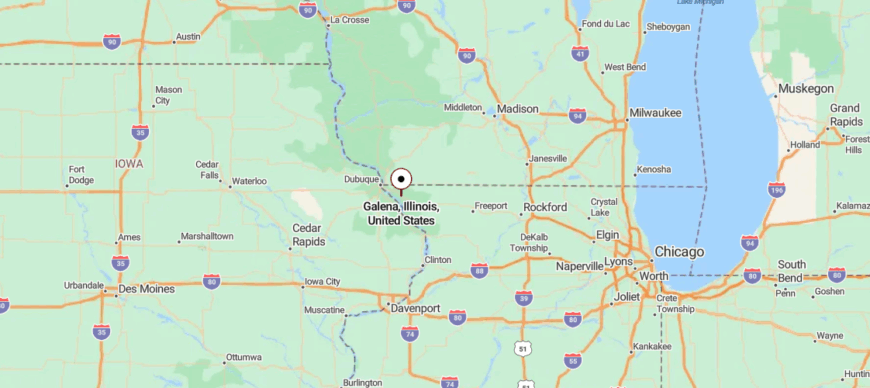
Galena is located in Jo Daviess County, tucked into the northwest corner of Illinois along the scenic bluffs overlooking the Mississippi River. It lies approximately 164 miles northwest of Chicago, or about 3 hours by car, giving it a distinctly remote feel despite being accessible via U.S. Route 20.
The approach follows Route 20 past rolling hills, farmland, and quiet small towns, drawing you gradually into Galena’s historic limestone storefronts and tree-lined streets. It’s close enough for a long weekend escape, but far enough that stepping into its cobblestone streets feels like entering a place where time pauses in a gentler rhythm.
15. Harvard’s Forest‑Bordered Calm
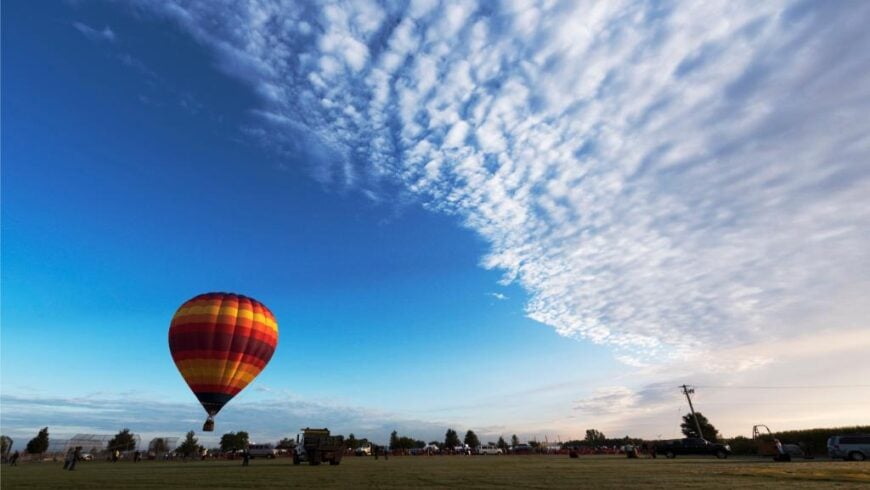
Harvard sits quietly near the northern border of Illinois, surrounded by farmland, scattered woods, and the long hush of open space stretching toward Wisconsin. Though served by a small rail line, the town remains distant from major highways, giving it a sense of calm separation from the busyness of the world beyond.
Its streets are lined with modest homes, old brick storefronts, and echoes of a past shaped by dairy farming and the rhythm of rail. You can stroll through historic downtown, fish at Rush Creek, browse handmade goods at seasonal markets, or walk beneath the tall trees of Milky Way Park.
While farming remains a steady presence, many locals now blend rural life with small-town trades or rail commutes to nearby cities. There’s a quiet resilience to Harvard—rooted, weathered, and warm. It’s the kind of place that reminds you how distance can feel like comfort.
Where is Harvard?
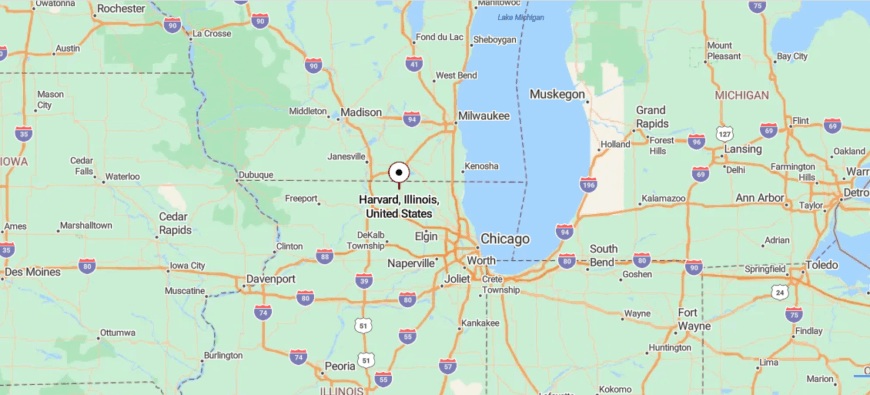
Harvard is located in McHenry County, tucked into the northeastern corner of Illinois just a few miles west of the Wisconsin state line. It lies about 60 miles northwest of Chicago and approximately 10 miles west of Wonder Lake, set quietly off Illinois Route 173 amid gently rolling farmland and low ridges.
You reach the city via the two‑lane stretch of Route 173 before turning onto local roads that curve past fields, tree clusters, and small ponds and lakes. It’s close enough to the city for easy access, but far enough that the countryside seems to slow around you, offering a calm welcome in open fields and wide skies.
14. Bull Valley’s Estate Hills
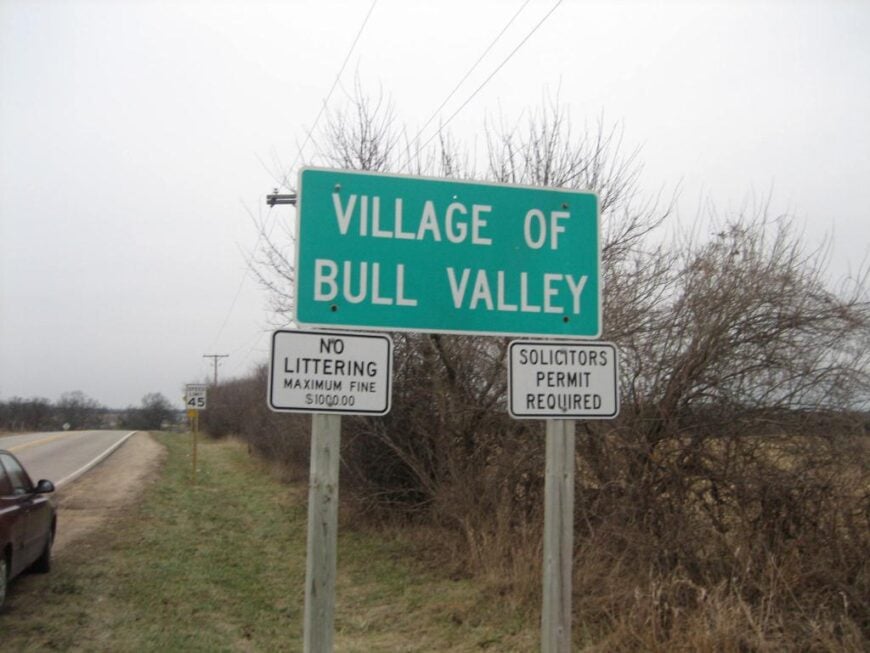
Bull Valley is hidden in the wooded hills and winding backroads of McHenry County, where forested estates and rolling farmland shield it from the sprawl of surrounding suburbs. With no major highways running through and strict preservation of open land, the village feels deeply removed—quiet by design, with just a few hundred residents spread across wide, wooded parcels.
The atmosphere is hushed and natural, where winding drives disappear into trees and the hum of wildlife replaces city sound. Visitors can hike the trails at nearby Glacial Park, drive the scenic Ridgefield Road loop, visit historic barns, or attend a rare open-studio art event in one of the secluded homesteads.
There are no shops or busy town centers—just space, silence, and old-growth trees standing guard. Most residents live here to escape, working remotely or commuting quietly from the calm. It’s the kind of place that reminds you how solitude can be a choice—and a gift.
Where is Bull Valley?

Bull Valley is located in McHenry County, nestled in the rolling woodland and farmland just west of the Wisconsin border in northeastern Illinois. It lies roughly 50 miles northwest of Chicago and about 6 miles north of Woodstock, set softly off Illinois Route 120 in a region of wooded knobs and open pastures.
You reach the community via two‑lane state routes that wind through oak‑and‑pine ridges before transitioning into quieter rural roads lined with hidden creeks and leafy hills. It’s close enough to reach comfortably, but tucked into the landscape enough that the woods feel like they hold their breath, inviting a quiet pace and gentle stillness.
13. Mettawa’s Equestrian Preserve
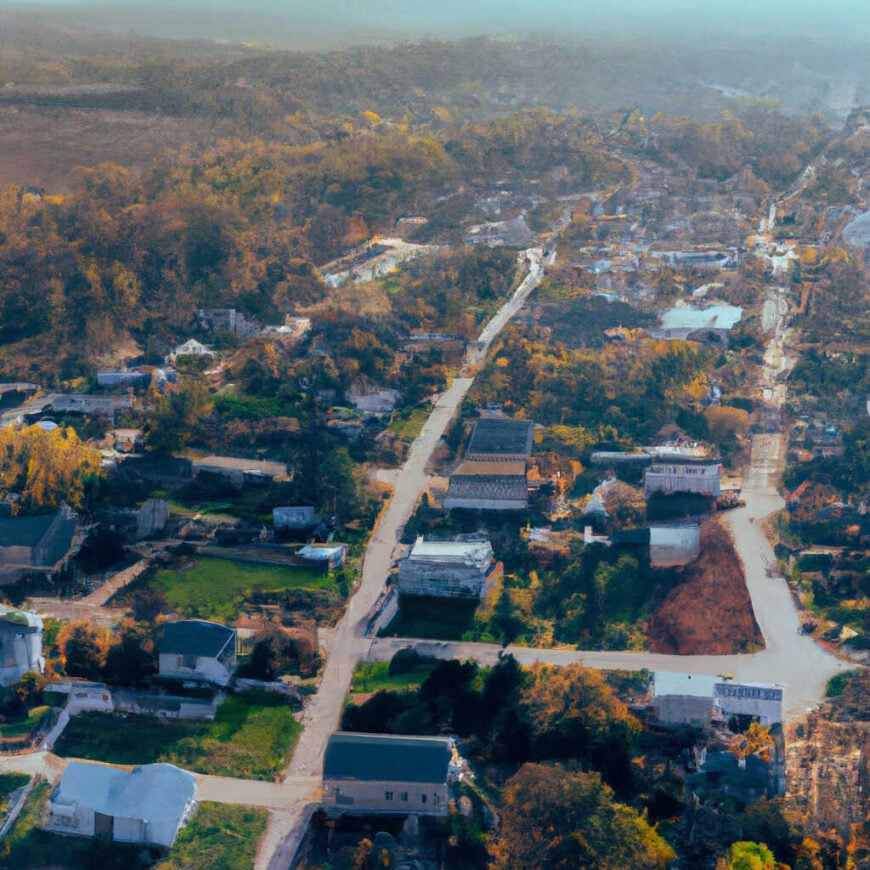
Mettawa is a rare pocket of stillness tucked between woodlands and wetlands in Lake County, where winding lanes and vast green space keep the village hidden in plain sight. With fewer than 600 residents and no commercial sprawl within its borders, Mettawa feels deliberately off-grid—shielded by forest preserves, horse trails, and the silence of protected land.
The vibe is serene and rural, with long driveways, old trees arching over quiet roads, and homes spaced far apart like respectful neighbors. Visitors can ride horseback through the Des Plaines River Trail, hike the preserves at MacArthur Woods, birdwatch in nearby wetlands, or bike beneath a canopy of oaks and maples.
There are no shops, just nature—and residents intend to keep it that way. Many who live here work elsewhere or remotely, drawn by the calm and the space to breathe. It’s the kind of place that reminds you how quiet can be carefully kept.
Where is Mettawa?

Mettawa is located in Lake County, tucked into the northeastern corner of Illinois along the gently rolling bluffs near the Des Plaines River watershed. It sits about 35 miles north of downtown Chicago and a few miles east of the Wisconsin border, quietly set off U.S. Route 45 amid woodlands and open preserves.
You arrive by following two‑lane local roads that wind through forested corridors and spacious estate lands before reaching the village’s tranquil center. It’s close enough to the city for a peaceful retreat, but far enough that the hush of trees and soft green expanses feel like a sanctuary apart from everyday life.
12. Nauvoo’s Riverbank Quiet
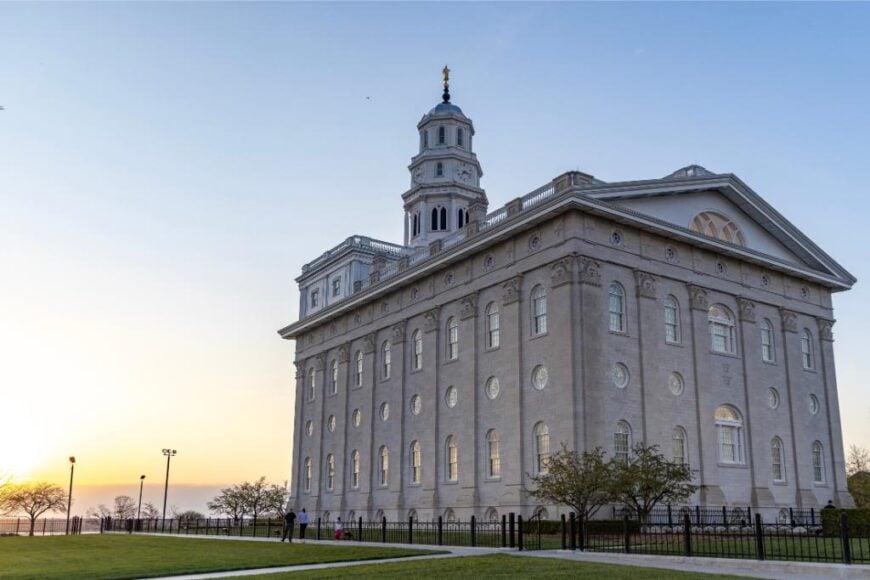
Nauvoo sits on a quiet bend of the Mississippi River in western Illinois, where the water curves gently around bluffs and woods, keeping the town tucked away from fast-moving life. With no major highways nearby and just a few hundred residents, it feels like a hidden chapter from another time—surrounded by farmland, river mist, and stories etched into old brick.
The town has a deeply historical calm, where wagon wheels once turned and stone paths still lead to preserved homes, shops, and temples. Visitors explore the Nauvoo Historic District, walk riverfront trails, tour pioneer-era buildings, attend local pageants, or watch the sunset from the blufftop temple grounds.
Tourism tied to its rich religious and pioneer history shapes the town’s slow, seasonal rhythm. Time here doesn’t just slow down—it settles. It’s the kind of place that reminds you how the past can still hold the present in its hands.
Where is Nauvoo?
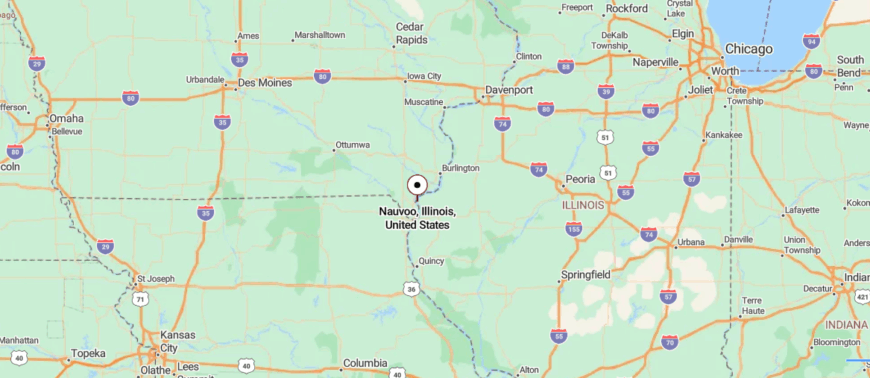
Nauvoo is situated in western Illinois, tucked into the gentle bluffs overlooking the Mississippi River along the scenic corridor of Hancock County. It lies about 115 miles southwest of the Quad Cities (Davenport/Bettendorf) and roughly 175 miles west of Chicago, set quietly just off Illinois Route 96 amid riverbottom woodlands and open prairie.
To reach the town, you follow two‑lane country highways alongside the river before turning onto smaller county roads that climb into town, revealing historic stone homes and quiet river terraces. It’s close enough for a long day trip, but far enough that the river’s hush and the aged charm of brick and steeple invite you to pause and breathe in another pace.
11. Oglesby’s Canyon Fringe
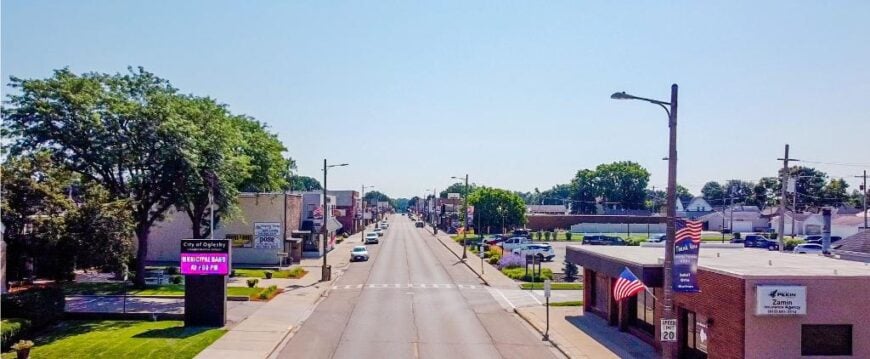
Oglesby is cradled between river valleys and forested cliffs in north-central Illinois, where the Vermilion and Illinois Rivers meet and the land folds into deep, quiet canyons. Though not far from nearby towns, its placement below bluffs and beyond major thoroughfares gives it a sheltered, tucked-away feel.
The town blends small-town stillness with rugged beauty—simple homes, tree-lined streets, and the ever-present hush of nature just beyond the edge of town. Visitors hike the dramatic trails of Starved Rock and Matthiessen State Parks, fish or kayak along the rivers, explore old stone bridges, or grab a meal at a long-running local tavern.
Many locals work in education, manufacturing, or outdoor tourism, shaped by both industry and the land itself. Oglesby moves at a grounded, unhurried pace, where even the wind through the trees seems to speak softly. It’s the kind of place that reminds you how nature can hold a town gently out of sight.
Where is Oglesby?
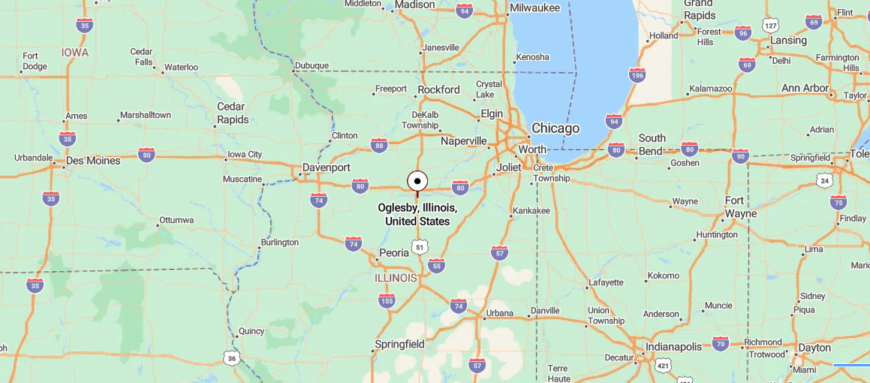
Oglesby is located in LaSalle County, tucked into north-central Illinois where the rolling plains meet the tree-lined banks of the Illinois River valley. It lies about 10 miles west of Peru and roughly 75 miles southwest of Chicago, quietly set off Interstate 80 and nestled along Illinois Routes 71 and 351.
You arrive by following the two‑lane scenic byways that run beside the river and through limestone bluffs, before turning onto quieter local roads that drift into the town’s gentle landscape. It’s close enough for a relaxed day trip, but far enough that the soft rustle of the river and the history held in old mills feel like a slower, quieter world waiting to be explored.
10. Savanna: Bluffs, Rivers, and Relaxed Vibes

With a population of approximately 3,000, Savanna sits gracefully along the Mississippi River, offering stunning views of the water and the towering bluffs characteristic of the Driftless Area. This laid-back town is a haven for those seeking outdoor adventures, including boating, fishing, and hiking in the Mississippi Palisades State Park nearby.
The local economy thrives on tourism, small businesses, and a strong sense of community. Savanna’s seclusion comes from its location amidst expansive natural landscapes, making it a peaceful retreat from more crowded destinations. Hidden gems like the Savanna-Sabula Bridge—the only bridge over the Mississippi between Illinois and Iowa in this region—add to its unique charm.
Where is Savanna?

Located in Carroll County in northwestern Illinois, Savanna is nestled along the eastern bank of the Mississippi River. Its secluded nature is enhanced by the surrounding bluffs and dense woodlands, which create a natural barrier from the busier areas further inland. The town is accessible via U.S. Route 52 and Illinois Route 84, making it a scenic drive for those approaching from Chicago or Dubuque. The journey to Savanna itself is a tranquil experience, winding through picturesque countryside that sets the tone for a relaxing visit.
9. Lanark: Gateway to Scenic Trails and Tranquility

Lanark is a small community of about 1,500 residents, known for its access to beautiful parks and trails that delight nature lovers and outdoor enthusiasts. The nearby Lake Carroll offers boating, fishing, and swimming opportunities, while the Oakville Nature Preserve provides peaceful hiking trails amid lush greenery.
Agriculture plays a significant role in Lanark’s economy, contributing to its rural charm. The town’s welcoming atmosphere and slower pace of life make it an ideal spot for those looking to unwind away from bustling urban centers. Its seclusion is part of its appeal, offering a sense of privacy and escape.
Where is Lanark?

Situated in Carroll County, Lanark lies in the heart of the Driftless Area’s rolling hills and farmland. It’s located approximately 130 miles west of Chicago, making it far enough to feel secluded but close enough for a weekend getaway. The town is accessible via Illinois Route 64, which runs east-west through northern Illinois. Lanark’s location amid expansive agricultural lands and minimal through traffic contributes to its peaceful isolation, making it a serene destination off the beaten path.
8. Mount Carroll: Historic Charm Amidst Rolling Hills

Home to around 1,700 people, Mount Carroll boasts well-preserved Victorian-era architecture that transports visitors back in time. The town’s vibrant arts scene includes local theaters, galleries, and annual events like the Timber Lake Playhouse summer theater. Main industries here revolve around tourism, education, and small businesses that cater to both residents and visitors.
The scenic surroundings of rolling hills and the Waukarusa River enhance Mount Carroll’s secluded ambiance, offering a quiet escape with plenty of cultural enrichment. Hidden gems like the Raven’s Grin Inn, a year-round haunted house, add a quirky touch to this historic town.
Where is Mount Carroll?

Mount Carroll is nestled in the northwestern part of Illinois, also in Carroll County. It’s located about 60 miles east of the Mississippi River and is accessible via Illinois Route 78. The town’s seclusion is due in part to its distance from major highways and urban centers, enveloped by picturesque farmland and gently rolling hills. This setting provides a tranquil environment that’s perfect for leisurely exploration and appreciating the area’s rich history and natural beauty.
7. Nora: A Tiny Hamlet with a Big Heart

Nora is one of Illinois’ smallest communities, with a population of just over 100 residents. This tiny hamlet offers a peaceful rural setting where everyone knows their neighbors, embodying a true hidden gem in the Driftless Area. While there are few formal attractions, the warm hospitality of its residents makes visitors feel right at home.
Agriculture dominates the local industry, contributing to the lush landscapes that surround the town. Nora’s seclusion is part of its charm, offering an intimate glimpse into small-town life that is increasingly rare.
Where is Nora?

Located in Jo Daviess County, Nora sits near the Illinois-Wisconsin border in the northwest corner of the state. Its remote location away from major roads enhances its secluded feel. To get there, travelers often take U.S. Route 20 west toward Galena, then venture onto smaller county roads that weave through scenic countryside. The journey to Nora offers picturesque views of rolling hills and farmland, emphasizing the town’s quiet seclusion and the beauty of its rural setting.
6. Apple River: A Quiet Escape into Natural Beauty

Apple River is a quaint village with a population of about 400 people, known for its serene environment and close proximity to Apple River Canyon State Park. Visitors can enjoy hiking, fishing, and wildlife viewing in the park’s rugged terrain and limestone bluffs.
The main industries include tourism and agriculture, with local businesses catering to outdoor enthusiasts and those seeking a peaceful getaway. The village’s seclusion is enhanced by its location amid unspoiled natural landscapes, offering a refreshing escape from everyday life.
Where is Apple River?

Apple River is situated in Jo Daviess County, nestled in the northwest region of Illinois near the Wisconsin border. The town is accessible via Illinois Route 78, but its off-the-beaten-path location keeps it quiet and uncrowded. The surrounding state park adds to the sense of seclusion, enveloping the area in dense forests and steep valleys. Travelers seeking a tranquil retreat will find the journey to Apple River a scenic introduction to the Driftless Area’s unique topography.
5. Scales Mound: Illinois’ Peak of Tranquility

Home to approximately 400 residents, Scales Mound holds the unique claim of being near the highest point in Illinois—Charles Mound. This quaint village exudes rural character amid rolling hills and offers panoramic views of the surrounding countryside. Agriculture is the primary industry, with farms dotting the landscape and contributing to the local economy.
Scales Mound’s secluded nature provides a peaceful atmosphere where visitors can enjoy the simplicity of country living. Hidden gems include seasonal access to Charles Mound, the state’s highest natural elevation on private property open to the public on select weekends.
Where is Scales Mound?

Located in Jo Daviess County, Scales Mound is tucked into the northwestern corner of Illinois, close to the Wisconsin state line. The village is accessible via county roads branching off from U.S. Route 20. Its remote location amid rolling hills and lack of major highways contribute to its seclusion. Visitors making the trip are rewarded with scenic drives through unspoiled landscapes and the charm of a town that values its quiet solitude.
4. Warren: Small-Town Charm with a Rich Heritage

Warren is a village of about 1,400 people, showcasing historic architecture and a strong sense of community. The town hosts annual local festivals like the Pumpkin Festival, which draws visitors to enjoy parades, local crafts, and home-cooked meals. Agriculture and small businesses are central to Warren’s economy, reinforcing its rural appeal.
The close-knit community spirit captivates visitors, making Warren a welcoming place that feels like a step back to simpler times. Its secluded nature adds to the charm, providing a peaceful environment away from the rush of larger towns.
Where is Warren?

Nestled in Jo Daviess County, Warren is located near the border with Wisconsin, accessible via Illinois Route 78. The town’s seclusion is due to its location amid expansive farmland and rolling terrain characteristic of the Driftless Area. The absence of major transit routes keeps Warren quiet and preserves its small-town atmosphere. Visitors traveling to Warren will enjoy scenic rural landscapes that highlight the natural beauty surrounding this charming village.
3. Hanover: Riverside Serenity Along the Galena River

Hanover, with a population of around 800, offers a peaceful atmosphere along the banks of the Galena River. The town provides scenic river views and opportunities for fishing, kayaking, and bird watching in a secluded setting. Local industries include agriculture and small businesses that serve both residents and tourists.
Hanover’s tranquil environment is enhanced by its natural surroundings, making it an ideal destination for those seeking relaxation by the water. Hidden gems like the Wapello Land and Water Reserve offer unique outdoor experiences not found elsewhere.
Where is Hanover?

Situated in Jo Daviess County, Hanover lies in the northwest of Illinois, nestled between rolling hills and the Galena River. It’s accessible via U.S. Route 20 and Illinois Route 84, though its distance from major cities helps maintain its secluded feel. The town’s location along the river and surrounding natural reserves creates a buffer from the outside world, offering visitors a serene escape into nature. The drive to Hanover is adorned with picturesque scenery that underscores the town’s peaceful isolation.
2. Stockton: Gateway to Serene Countryside Adventures

Stockton is a friendly community of about 1,800 residents, set in a tranquil rural setting ideal for outdoor enthusiasts. The town is close to natural attractions like the Apple River Canyon State Park and Lake Carroll, where visitors can enjoy hiking, fishing, and boating. Agriculture and small manufacturing businesses contribute to Stockton’s local economy.
The seclusion of Stockton is part of its allure, providing a peaceful countryside atmosphere removed from the noise of urban life. Hidden gems include local wineries and cheese factories that offer a taste of the area’s agricultural bounty.
Where is Stockton?

Located in Jo Daviess County, Stockton sits approximately 50 miles west of Rockford, Illinois. Accessible via U.S. Route 20, the town is far enough from major highways to maintain a quiet, secluded environment. The surrounding rolling hills and farmland contribute to Stockton’s serene setting. Travelers heading to Stockton will appreciate the scenic drive through the heart of the Driftless Area, where the landscape invites visitors to slow down and enjoy the beauty of the countryside.
1. Elizabeth: A Historic Village Nestled in Rolling Hills

Elizabeth is a historic village with a population of around 700 people, nestled amidst the rolling hills of the Driftless Area. The town is rich in history, featuring landmarks like the 1850s Apple River Fort, a site of a significant battle during the Black Hawk War. Visitors can explore the charming downtown area, filled with antique shops, cafes, and the Chicago Great Western Railway Depot Museum.
Main industries include tourism and local crafts, reflecting Elizabeth’s commitment to preserving its heritage. The village’s secluded nature comes from its tucked-away location in the hills, offering a peaceful retreat with scenic landscapes at every turn.
Where is Elizabeth?

Elizabeth is located in Jo Daviess County, along U.S. Route 20 between Stockton and Galena. Its position amid the unglaciated hills adds to its seclusion, set apart from busier tourist destinations. The town is accessible yet maintains a quiet atmosphere, surrounded by natural beauty characteristic of the Driftless Area. Visitors traveling to Elizabeth will find the journey just as charming as the destination, with winding roads that showcase the region’s unique topography and tranquil ambiance.


